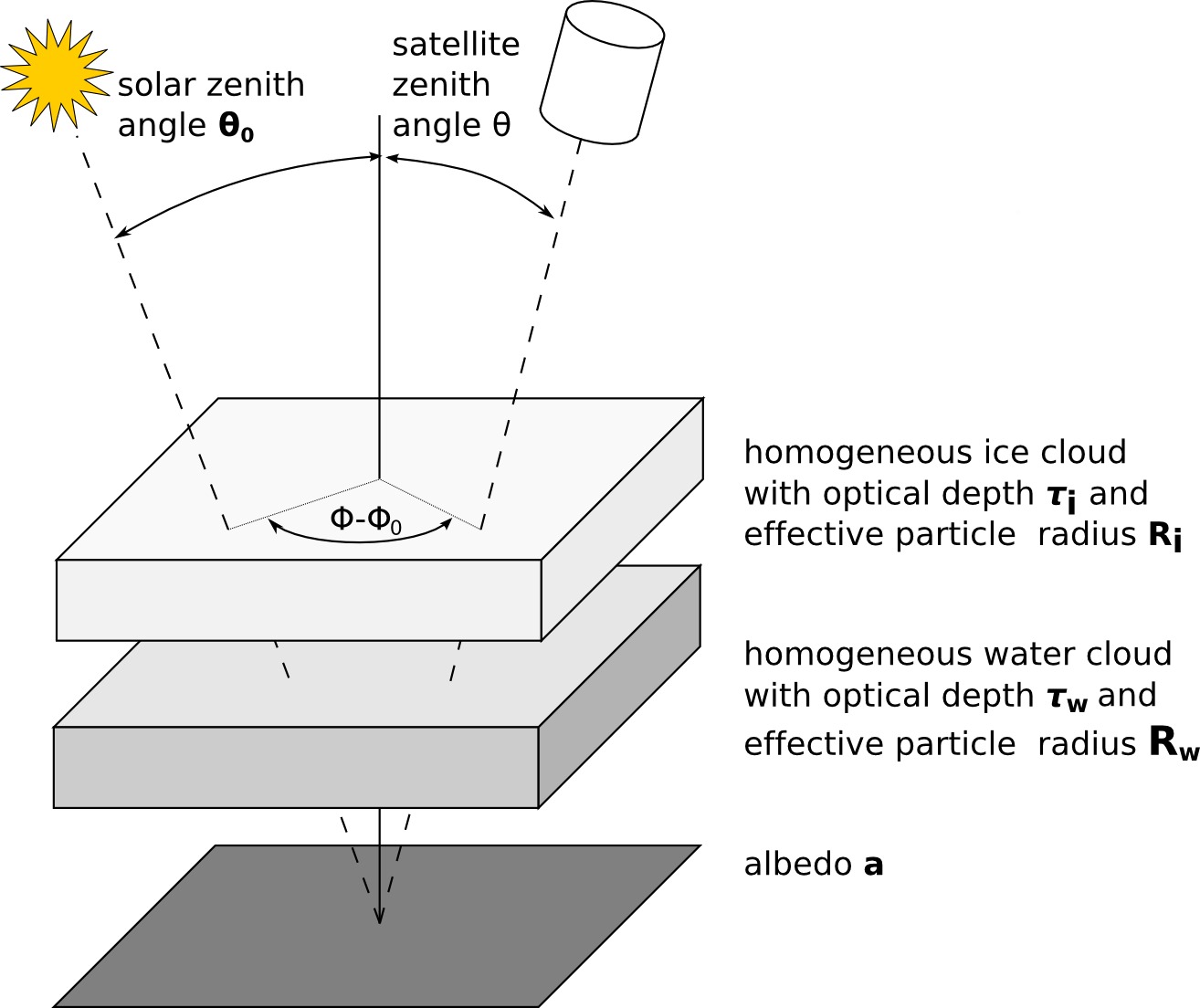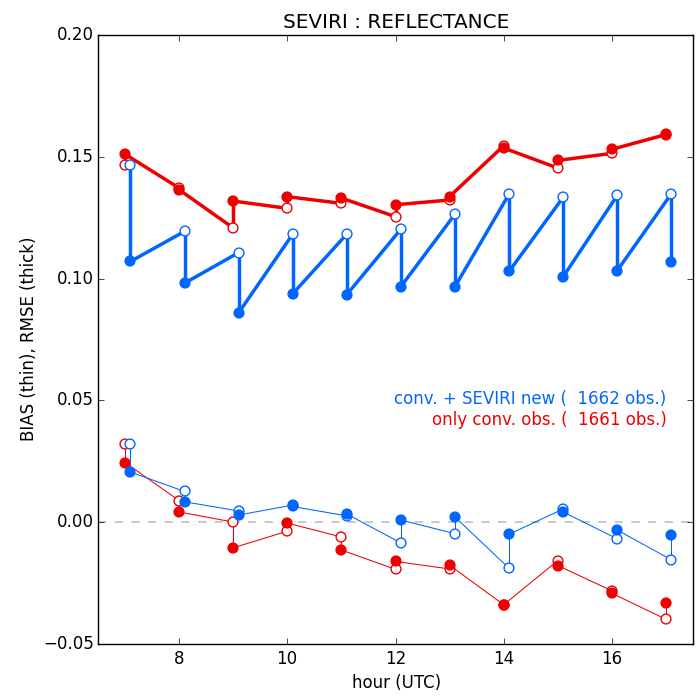A fast and accurate forward operator for visible and near infrared channels
Currently, operational data assimilation systems in general utilize only clear sky thermal infrared and microwave radiance observations, which mainly provide temperature and humidity information. The scattering processes dominating at visible and near-infrared wavelengths make radiative transfer computations very complex. Consequently, fast forward operators for these bands are not yet available. Visible and near-infrared observations, which contain information about cloud distribution and cloud properties (optical depths, particle sizes, water phase), can therefore not be considered in DA.

Figure 2: Idealized scene, which is fully described by the MFASIS parameters. Each entry in the reflectance table is determined by a 1D radiative transfer calculation for such a scene.
To address this shortcoming, a fast forward operator for visible and near-infrared reflectance observations from MSG-SEVIRI is currently in development. The operator simulates synthetic satellite images from COSMO-DE model output and relies on MFASIS, a loop-up table based radiative transfer method that is sufficiently accurate and orders of magnitude faster than conventional radiative transfer solvers for the visible spectrum. The strategy behind MFASIS is to use a minimal set of parameters describing the radiative transfer problem, to compute reflectances for idealized scenes defined by all relevant combinations of parameter values with conventional 1D RT methods and to compress the resulting reflectance table to a reasonable size. Considering idealized scenes (Fig. 2) with two homogeneous layer instead of taking the full vertical profile of cloud water and particle sizes into account causes only an error of a few percent in the resulting reflectance, which is acceptable for DA purposes. The table compression is achieved by storing only the lowest order terms of a cosine series and power series expansion of the reflectance as a function of the satellite viewing angles.

Figure 3: Reflectance RMSE (thick lines) and bias (thin lines) for data assimilation experiments with only conventional observations (red) and conventional + visible SEVIRI observations (blue). Open circles indicate first guess, filled circles analysis values.
A preliminary version of the operator has been completed and implemented in the pre-operational km-scale Ensemble Data Assimilation (KENDA) system of DWD. First results show that assimilating visible SEVIRI observations in addition to conventional observations reduces the error and the bias of the reflectance field (Fig. 3) without degrading the improvements due to conventional observations significantly. Moreover, verification with independent GPS water vapor observations show a positive impact of the SEVIRI observations.

